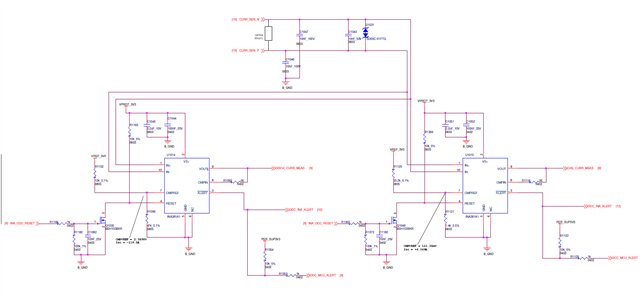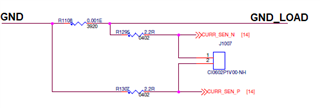Hello All,
I am using INA381 device for measuring & detecting OC for bidirectional current. The devices are connected as shown below. When the board is powered the series resistor degrades and ultimately the resistor damages and shows >20kohm. May know what would be the reason for the same. the bias currents are max. 80uA from each device which should not dissipate more power for the resistor.

Thanks in advance.
Anand M



